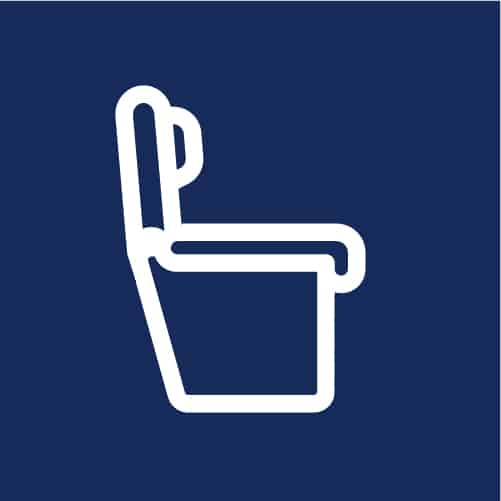How to Measure a Riser Recliner
Riser recliners are a popular independent living aid that makes it easier for people with mobility issues, chronic pain, and other medical concerns to sit for extended periods of time in comfort. A quick look at our online store for rise and recline chairs shows the wide variety of options available in terms of style, upholstery, cushions, colours, and more. However, of all the attributes to consider when buying one of these products, the size is the most important.
In this article, we will explain how to measure up for a riser recliner chair to ensure the most comfortable seating experience:
![]()
How to measure for a riser recliner
The first thing to remember is that you’re not measuring for the chair to fit in your home, but for how it will fit around you, the user. There are several key measurements you will need to take, and they should be as accurate as possible. For this reason, we recommend using a rigid tape measure, such as a retractable handyman’s tape measure. Fabric measuring tapes tend to give inaccurate results unless you’re able to keep them taut during the measurement process.
To get good results, you should be seated upright in a chair with your feet flat on the floor. This allows for accurate measurements to determine the right dimensions for your riser recliner.
The 5 key measurements for a rise and recline chair
Riser recliners are specialist pieces of furniture and require accurate measurements so they can be built to order. These are the five measurements you will need to take to get the perfect chair for you and your comfort needs.

Seat height
Measure the distance from the floor to the top of the seat. This is an important measurement—if the seat is too low, it can cause circulation problems in the legs and distribute extra weight to the buttocks. Conversely, if it’s too high, it may cause you to slouch in your chair, affecting your posture.

Seat depth
Measure the distance from the front of the seat cushion to the chair’s backrest. You should be able to sit with your back fully against the backrest and your upper legs supported by the seat cushion. If the chair is too deep, the front of the chair will exert pressure on the knees and make you slide forward in your seat.

Seat width
Measure the distance from the inside of one armrest to the inside of the other. To allow your arms to lie comfortably on the armrests, you should allow a gap of around ¾ inch on each side of your buttocks. If the chair is too wide, you may end up leaning in your seat, while if it’s too narrow, it can rub against you during use.

Back height
Measure from the back edge of the seat cushion to the top of the backrest. This should be high enough to provide support for your head when you’re sitting upright in the chair with your back against the rest. If the backrest is not high enough, you may end up with neck pain or your head drooping forward.

Armrest height
Measure the distance from the top of the seat cushion to the top of the armrest. You should be able to lay both arms on their respective armrests at the same time without your shoulders feeling the strain. Armrests that are too low make it difficult to get in and out of your chair. Armrests that are too high can cause neck and shoulder pain.
Leave it to the professionals
Of course, getting these measurements can be tricky if you don’t have a suitable chair to sit in during the process. When you arrange an in-store or at-home riser recliner demonstration with Easi-way Mobility, we can take your measurements while you’re sitting on one of our models. With our decades of experience getting rise and recline chairs built to fit, we guarantee accurate measurements for a comfy chair experience.
![]()





